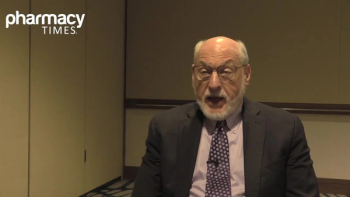
Study Demonstrates Niraparib, Bevacizumab Combination Therapy to Have Consistent Safety Profile
An interview with Debra Richardson, MD, examined the phase 2 study that included niraparib with bevacizumab for patients with either a complete or partial response after upfront chemotherapy for advanced ovarian cancer.
An interview with Debra Richardson, MD, Division of Gynecologic Oncology, Stephenson Cancer Center, University of Oklahoma Health Sciences Center, examined OVARIO: a phase 2 study examining niraparib with bevacizumab for patients with either a complete response (CR) or partial response (PR) after upfront chemotherapy for advanced ovarian cancer (OC).
The findings were presented in conjunction with the Society of Gynecologic Oncology 2020 Annual Meeting on Women’s Cancer.
According to Richardson, the niraparib with bevacizumab combination therapy was used as maintenance for patients who may have received bevacizumab for at least a few cycles with their chemotherapy upfront. The OVARIO study, which included 105 patients, referenced the POALA1 study that was previously reported at the ESMO 2019 conference in Chicago, Illinois.
“So, reporting out of that similar idea that there may be some synergism between (poly ADP ribose polymerase [PARP]) inhibitors and antioncogenetic agents so especially since we know that PARP inhibitors work really well for BRCA patients whether that’s germline or somatic,” Richardson said to Pharmacy Times®.
Niraparib has been shown to improve progression-free survival (PFS) in patients with newly diagnosed and recurrent OC after platinum-based chemotherapy in all biomarker-defined subgroups.
In this study, all patients with newly diagnosed FIGO stage IIB-IV OC who had a CR or PR after first-line platinum-based chemotherapy plus bevacizumab were eligible. All patients underwent tissue testing for homologous recombination deficiency (HRd) or proficiency at enrollment.
Niraparib, 300 or 200 mg once daily (based on baseline body weight and platelet count), was started within 12 weeks of completing first-line treatment and continued for 3 years or until progressive disease or unacceptable toxicity. The primary endpoint was PFS at 18 months from treatment initiation. An interim analysis of PFS at 6 months from treatment initiation was performed after all patients had 2 scans after starting treatment.
Richardson explained that the combination worked well for patients who were HRd positive, but not all patients fall under this category. She explained that firstly, bevacizumab is approved by the FDA for maintenance and sometimes providers do need to give bevacizumab without chemotherapy upfront.
“For example, there are high risk features out of ICON7 so if you have stage 4 disease, if you had recurrent malignant pleural effusion that you need to control, you might find yourself giving bevacizumab. So, then the question becomes do you continue bevacizumab as maintenance alone, do you switch to a PARP inhibitor, or can you give both. So that was part of the rational,” Richardson said to Pharmacy Times®.
In addition, researchers were examining where there could be synergism especially for those who may not respond as well to the PARP inhibitor to try and extend who would benefit from that maintenance.
Most patients received neoadjuvant chemotherapy (63%), were stage 3 (79%), and had serous histology (95%). Overall, 49% of patients had pre-existing hypertension and 47% of patients were HRd, including HRd-BRCA mutations and HRd-BRCAwt. The starting dose was 200 mg in 78% of patients. At 6 months, the PFS rate was 89.5%. Grade ≥3 related treatment-emergent adverse events (AEs) included thrombocytopenia, anemia, and hypertension, similar to the AVANOVA trial, which used the same combination.
Overall, the safety of the niraparib plus bevacizumab combination was consistent with the known AEs of each drug as monotherapy, and the combination did not appear to cause cumulative toxicities. Additionally, the median PFS in advanced OC following firstl-line platinum-based chemotherapy plus bevacizumab has not been reached.
Richardson explained that the results of the study were in line what the researchers expected.
“It built on the PAOLA [in] that we can safely combine bevacizumab and niraparib. One of the interesting side effects of niraparib is that it can cause hypertension and overlapping toxicity potentially with bevacizumab, but we were actually able to combine bevacizumab with niraparib safely. The results are still preliminary, so we have to wait for the final analysis. But so far, it’s looking like we can safely give them, we’re not finding any safety signals or anything like that,” she said to Pharmacy Times®.
Reference
- Phase II OVARIO study of niraparib + bevacizumab therapy in advanced ovarian cancer following front-line platinum-based chemotherapy with bevacizumab. SGO conference website. https://sgo.confex.com/sgo/2020/meetingapp.cgi/Paper/15907. Accessed April 15, 2020.
- Interview with Debra Richardson, MD. Pharmacy Times. April 2, 2020. Accessed April 10, 2020.
Newsletter
Stay informed on drug updates, treatment guidelines, and pharmacy practice trends—subscribe to Pharmacy Times for weekly clinical insights.



















































































































































































































